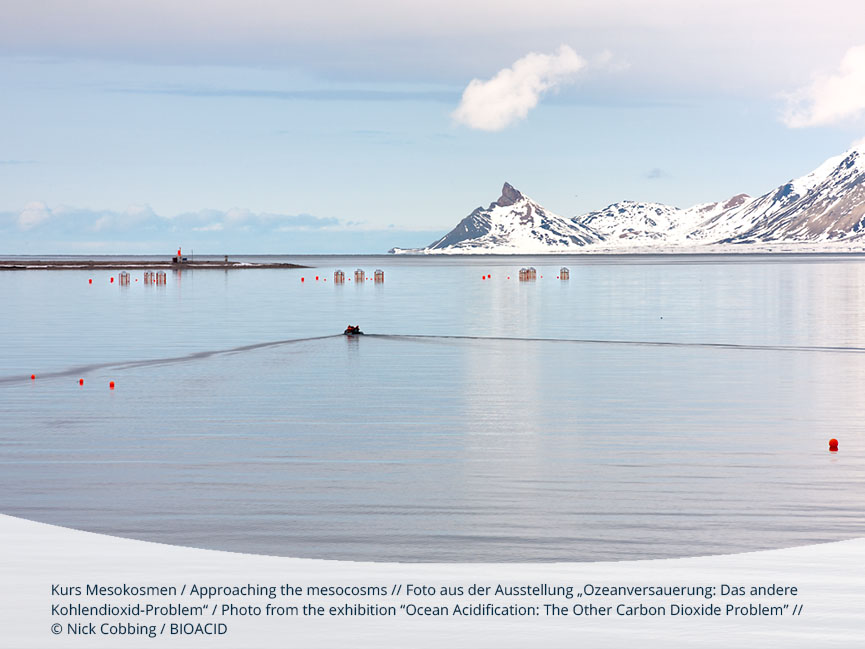
The Arctic – an early warning system
Case study
The Arctic Ocean is already being impacted by the effects of climate change. Like an early warning system, it is exhibiting transformations that other places may undergo in the future.
Air and water temperatures have risen since the end of the 19th century, and the annual mean Arctic sea-ice extent has decreased during recent decades. Because of its still comparably low water temperatures, the ice-free areas of the Arctic Ocean also absorb more carbon dioxide from the atmosphere and acidify more intensely than warmer waters. Already at present, acidification and warming affect organisms throughout the marine food web.
The polar cod Boreogadus saida is one of the key players in the Arctic ecosystem. It is preyed upon by larger fish, birds and marine mammals such as seals and whales. Polar cod spend part of their life cycle under the sea ice, feeding on zooplankton which in turn lives on ice algae that can be found directly under the ice. For this reason, a retreat of the sea ice can eventually cause a reduction of polar cod stocks.
As a highly-specialised species, polar cod have adapted to the relatively stable low temperatures and sparse food availability of the Arctic Ocean. According to BIOACID experiments, these fish have difficulties adjusting their metabolism to a warmer environment and cannot cope with a broad range of temperatures. As a consequence, they are forced to retreat to higher latitudes – their habitat shrinks.
Around Svalbard, at the southern range of their distribution, polar cod increasingly face competition with its larger, voracious relative, the Atlantic cod Gadus morhua. This species is migrating north due to rising water temperatures. It not only feeds on polar cod and capelin – juvenile Atlantic cod also compete directly with polar cod for food sources.
Ocean acidification will take its toll on both cod species, mostly by further exacerbating negative effects of ocean warming. BIOACID scientists have found that both drivers work synergistically, especially on the most sensitive early life stages of polar cod as well as embryo and larval survival.
At the moment, Atlantic cod still benefit from ocean warming at the northern boundary of its distributional range. But an ecological model which integrates the results from BIOACID experiments finds that early recruitment success of the cod stock in the Barents Sea, a marginal sea of the Arctic Ocean, may be strongly reduced by combined acidification and warming in the second half of the 21st century.
To cope with the challenges of a changing ocean, marine organisms require extra energy. Therefore, scientists are eager to assess changes in food web composition and nutrient availability.
The sea butterfly Limacina helicina is an important food source for lots of marine animals, including polar and Atlantic cod. Sea butterflies are tiny swimming snails that carry calcium carbonate shells. Ocean acidification and warming affect their shell growth and metabolism which might reduce their value as prey. Furthermore, field studies suggest that their numbers might decrease. These observations indicate that some important food sources are negatively affected by ocean acidification and warming with consequences for organisms at higher trophic levels.
As polar species are specifically adapted to lead a low-energy lifestyle, they develop comparably slowly and react with less flexibility to changes in their environment. By contrast, species in temperate regions are adapted to a wider range of environmental conditions. From this point of view, polar ecosystems appear to be most susceptible to even subtle environmental changes brought about by climate change.
Learn more about marine life in the Arctic in these video portraits of Dr. Felix Mark and Dr. Silke Lischka.
READ MORE: Case study Eyewitnesses of ocean change